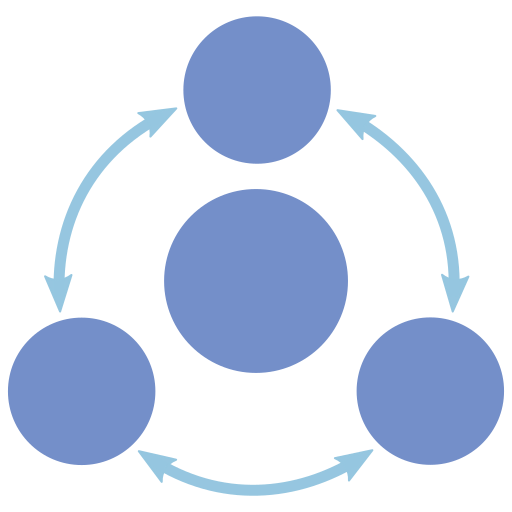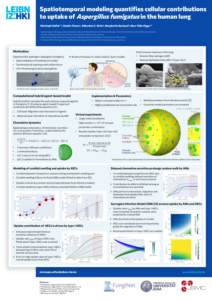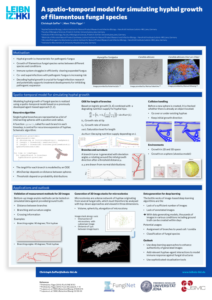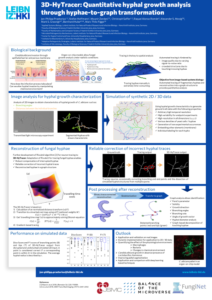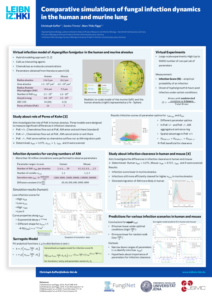In this project, a virtual infection with A. fumigatus in human and murine alveolus is simulated. Aspergillus fumigatus, a lung pathogen, enters the lower respiratory tract via conidia, forms hyphae and poses life-threatening risks. Alveolar macrophages (AM) can recognise and eliminate this fungus, prompting an investigation into how AM numbers affect A. fumigatus clearance. This project analysed AM numbers in humans and mice using analytical and numerical modelling. A three-dimensional, to-scale hybrid agent-based model (hABM) of the alveolus simulated numerous infection scenarios to quantify the dynamics for varying AM numbers and infection doses. Given the computational intensity, a trained analytical surrogate infection model was developed from extensive hABM simulations. This model reduces simulation requirements while providing accurate predictions of infection progression, insights into dynamics under healthy and immunocompromised conditions, and optimal AM levels for controlling A. fumigatus infections in both species.
In this project, a virtual infection with A. fumigatus in human and murine alveolus is simulated.
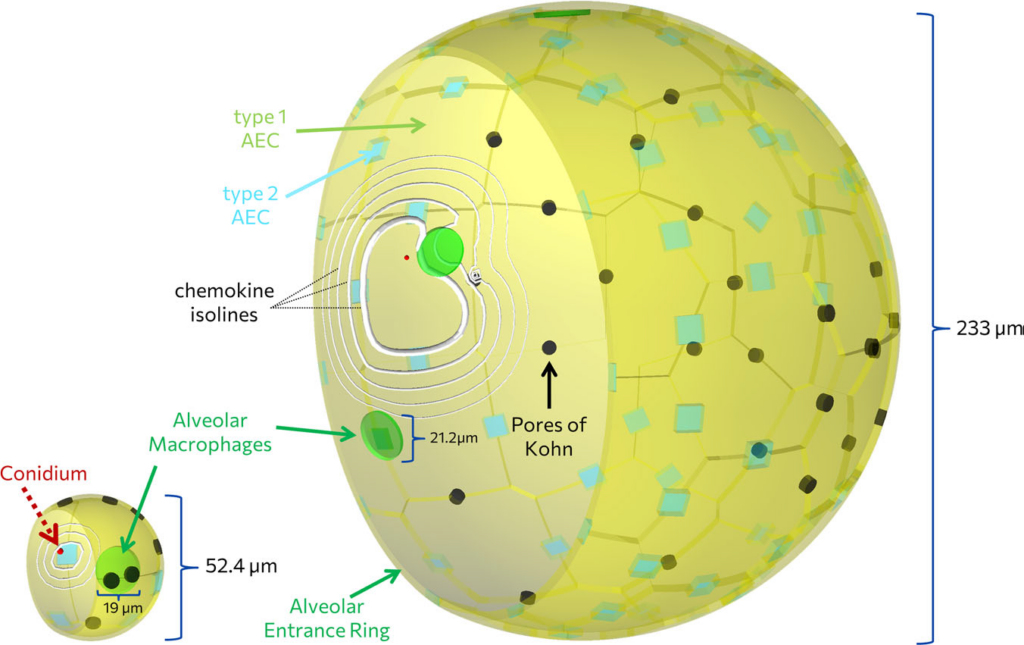
epithelial cell layer consisting of alveolar epithelial cells (AEC) type I (yellow) and type II (blue). A single Aspergillus fumigatus conidium (red) is
randomly positioned on the inner alveolar surface and the contacting AEC is secreting chemokines (white isolines) to attract AM (green)
towards the conidium. The alveolar entrance ring and the pores of Kohn (black) are the boundaries of the system.
Experimental Collaborators
- Tuchscherr Lab at the University Hospital Jena, Germany
- Molecular and Applied Microbiology at the Leibniz-HKI in Jena, Germany
- Jena Microbial Resource Collection at the Leibniz-HKI in Jena, Germany
